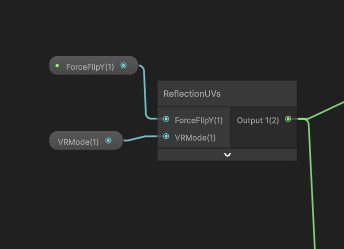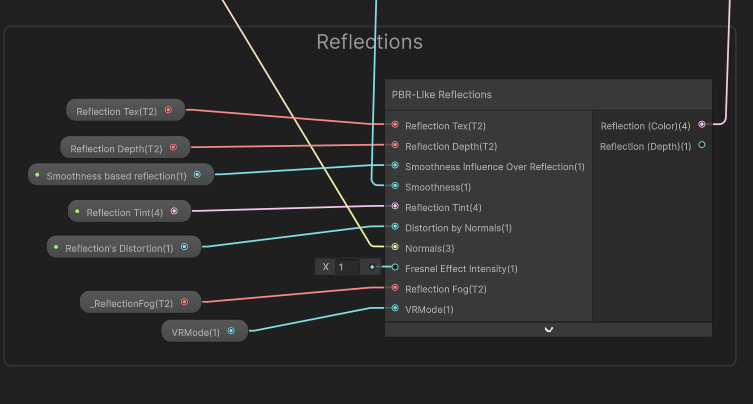In the Universal RP you can easily create custom shaders that support real-time reflections by using the included ShaderGraph sub-graphs that handle reflection UVs (for simple reflections) and full PBR based workflows. These graphs can be edited and extended as you see fit in order to adapt to your project’s purposes.
ReflectionUVs node

This node automatically generates a Vector2 type output containing ready to use UVs to use on either the Reflection color or Reflection depth textures.
The optional ForceFlipY value can either be 0 or 1 and defines whether the reflection should be flipped vertically.
The VRMode value should be a non-exposed float property called _VRMode, which will be set automatically by the Planar Reflection Caster when a camera using VR requires a reflection pass, triggering all the necessary conversions internally so that the reflection can work as expected in stereoscopic mode.
PBR Like Reflections node

The PBR-Like reflection node generates a PBR based reflection that takes into account the smoothness of the material, its normal and a simple fresnel effect. It takes as inputs the Reflection Tex and Reflection Depth textures, a value to define how much the smoothness of the material will affect the sharpness and intensity of the reflection, the smoothness of the material as a float value, a color for the reflection’s final tint, a value controlling how much the normals of the material will distort the reflection and a vector3 containing the normal data of the material (the same value that will be sent to the Normal output of the shader), and finally a value specifying the intensity of the fresnel effect.
Just like before,the VRMode value should be a non-exposed float property called _VRMode, which will be set automatically by the Planar Reflection Caster when a camera using VR requires a reflection pass, triggering all the necessary conversions internally so that the reflection can work as expected in stereoscopic mode.
